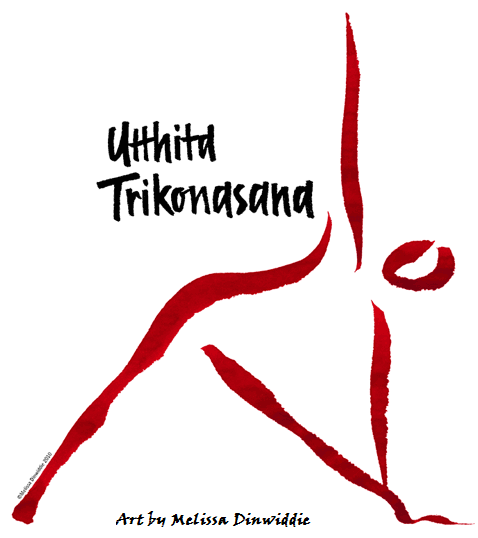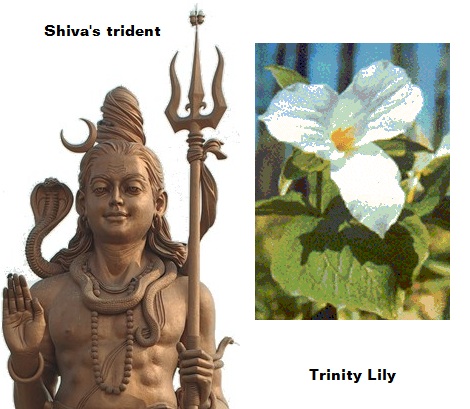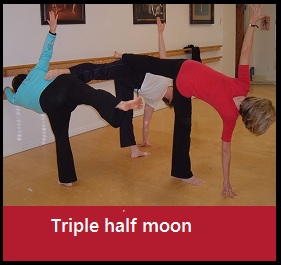Triangle Pose: Trikonasana — Tri konas or three angles
The triangle is considered to be one of the strongest and most stable shapes in nature. The quality of a triangle is strength and its capacity to support weight and resist pressure. 
The triangle appears in many forms in our world. It is used in the construction of buildings. We use the form for our tripods as a platform for our cameras and other devices. We use dutch ovens or pots with three legs, stools and other items to help stabilize and support our activities.
There is also the application of a triangle in our language called the triadic relationship—a speaker, a message and receiver. Early Romans established in their government a triumvirate or board of three officials. Our own government uses a system of checks and balances that involves three branches.
We know that three is also a sacred number when it applies to the trinity or Godhead in religion. The Paschal or Easter Triduum is three days of prayer and fasting proceeding a Roman Catholic feast. In Hinduism, Siva, the Lord of Yoga uses a three pronged tool—the trident as his scepter. It represents truth, consciousness and bliss A flower called the Trinity Lily has three petals and is a symbol of a pure heart, body and mind.
In yoga the triangle pose is not only the physical form of a triangle but the representation of the body, mind and spirit. As we explore this pose be in tune to any thoughts or images that may arise and spend some time reflecting what you might be learning about yourself. You might want to think of what supports you in day to day living. What are some of the relationships with others you are interconnected with? Do you feel that you are balanced in the things that you do for yourself mentally, physically and emotionally? Is there a relationship you want to stabilize? What are three of your greatest strengths?




